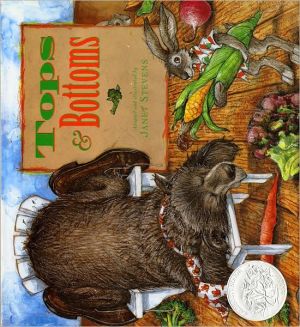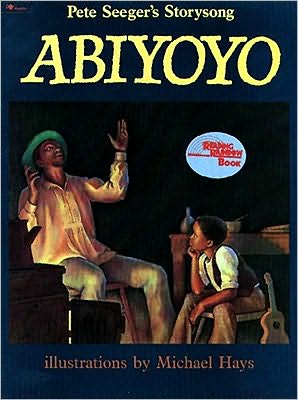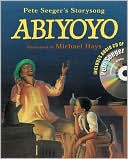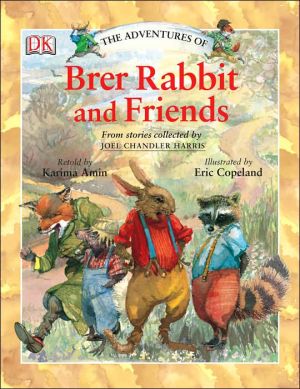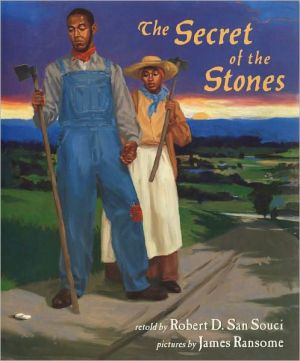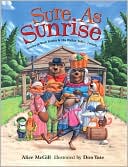Tops and Bottoms
Hare solves his family’s problems by tricking rich and lazy Bear in this funny, energetic version of an old slave story. With roots in American slave tales, Tops & Bottoms celebrates the trickster tradition of using one’s wits to overcome hardship. “As usual, Stevens’ animal characters, bold and colorful, are delightful. . . . It’s all wonderful fun, and the book opens, fittingly, from top to bottom instead of from side to side, making it perfect for story-time sharing.”—Booklist\ This...
Search in google:
Hare solves his family’s problems by tricking rich and lazy Bear in this funny, energetic version of an old slave story. With roots in American slave tales, Tops & Bottoms celebrates the trickster tradition of using one’s wits to overcome hardship. “As usual, Stevens’ animal characters, bold and colorful, are delightful. . . . It’s all wonderful fun, and the book opens, fittingly, from top to bottom instead of from side to side, making it perfect for story-time sharing.”—BooklistChildren's LiteratureHare's hungry family forces him to use his wits in order to feed them. Playing Bear like a violin, Hare suggests that if Bear donates the land, Hare will do the work and they'll split the crop. Bear must choose. Whether Bear chooses tops or bottoms, he'll lose, as Hare is in control and doing all the work. The facial expressions of the animals are delightful and the fact that the book opens vertically allows us to view all the action simultaneously. A Caldecott Honor Book, 1996.
\ Children's Literature - Susie Wilde\ Drawing on European and slave folk traditions, Stevens retells the tale of rich, lazy Bear, a landowner who is willing to barter work for crops with poor, enterprising Hare. Hare gets Bear to agree to split crops from top, bottom, or middle and once Bear makes his choice, Hare plants accordingly. He harvests the bottoms of carrots, radishes and beets and then the tops of lettuce, broccoli and celery. Young listeners will be captured by Steven's sense of drama and the clever Hare. The book could lead to a discussion of how Hare will outsmart Bear next, or a more general discussion of how food grows.\ \ \ \ \ Children's Literature - Meredith E. Kiger\ This is clever reworking of several childhood fables put into the language of the modern business world. Hare and Bear are neighbors and they decide to go into the crop raising business together. Bear is so lazy, however, that he does none of the work, and the Hare family collects the best part of the harvest (the profits). Bear complains and insists on being more fairly treated, but again does none of the work. At the next harvest, Bear's lack of attention again leaves him with the short end of the stick. Engaging illustrations add to this humorous tale of the ups and downs of partnerships and the work ethic. The format is also a nice surprise and there are great possibilities for extending the story.\ \ \ Children's LiteratureHare's hungry family forces him to use his wits in order to feed them. Playing Bear like a violin, Hare suggests that if Bear donates the land, Hare will do the work and they'll split the crop. Bear must choose. Whether Bear chooses tops or bottoms, he'll lose, as Hare is in control and doing all the work. The facial expressions of the animals are delightful and the fact that the book opens vertically allows us to view all the action simultaneously. A Caldecott Honor Book, 1996.\ \ \ \ \ School Library JournalPreS-Gr 2-A note states that this trickster tale has ``roots in European folktales and slave stories of the American South.'' Lazy Bear sleeps through every planting season, so conniving Hare makes a deal. He and his family will work Bear's land and split the crops in half. He'll even let Bear choose which half he wants-``tops or bottoms.'' Bear chooses tops so Hare plants root crops, leaving Bear with a useless harvest. A furious Bear insists next time he'll take bottoms so Hare plants corn, leaving empty stalks. The entertaining story is illustrated with Stevens's now familiar artwork-lively, colorful line-and-wash spreads filled with sprightly characters and humorous details. The contrast between the slumbering bear and the frantically energetic hare family is especially amusing. Unfortunately, some illustrations are marred by the placement of the boxed text. The book opens vertically rather than horizontally; while this design element is a clever complement to the growing theme, it is not completely successful. At times, the visual flow is interrupted. The narration is also somewhat awkward. Despite the obvious flaws, this title is sure to be popular with Stevens's fans and youngsters who crave ``funny books.''-Heide Piehler, Shorewood Public Library, WI\ \ \ \ \ Stephanie Zviringes 47. Large, dynamic double-page-spread paintings are only part of the charm of this very funny picture book. Easily recognizable as a trickster tale (Stevens' source note roots the story in European folktales and slave stories of the American South), this features appealing, contemporary cousins of Brer Rabbit and Brer Bear. Here, Bear and Hare are involved in a gardening partnership, with industrious, clever Hare reaping all the vegetable profits. As usual, Stevens' animal characters, bold and colorful, are delightful. Hare, decked out in a lively gardening shirt and surrounded by mischievous offspring, is the image of determination. It's Bear, however, who wins the personality prize: he snoozes away each planting season squashed in his favorite chair, changing positions with each flip of the page. It's all wonderful fun, and the book opens, fittingly, from top to bottom instead of from side to side, making it perfect for story-time sharing.\ \
